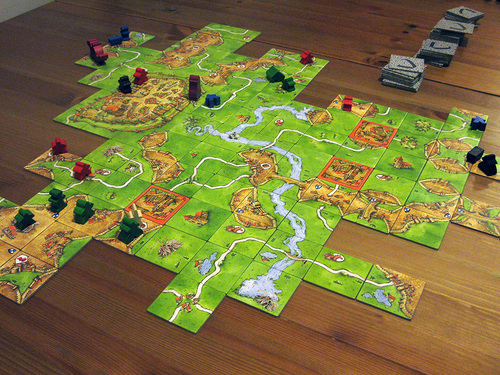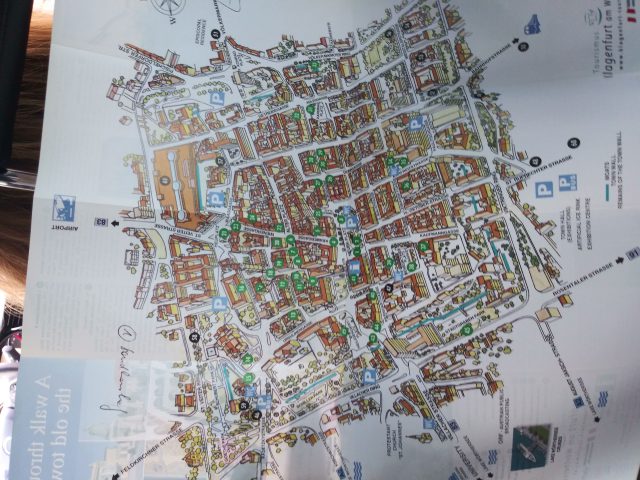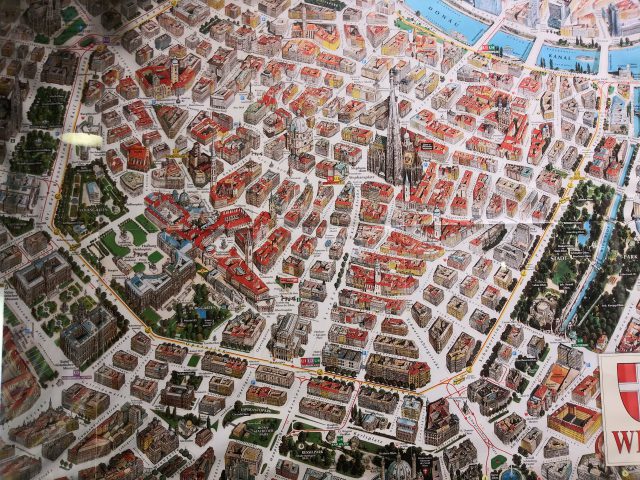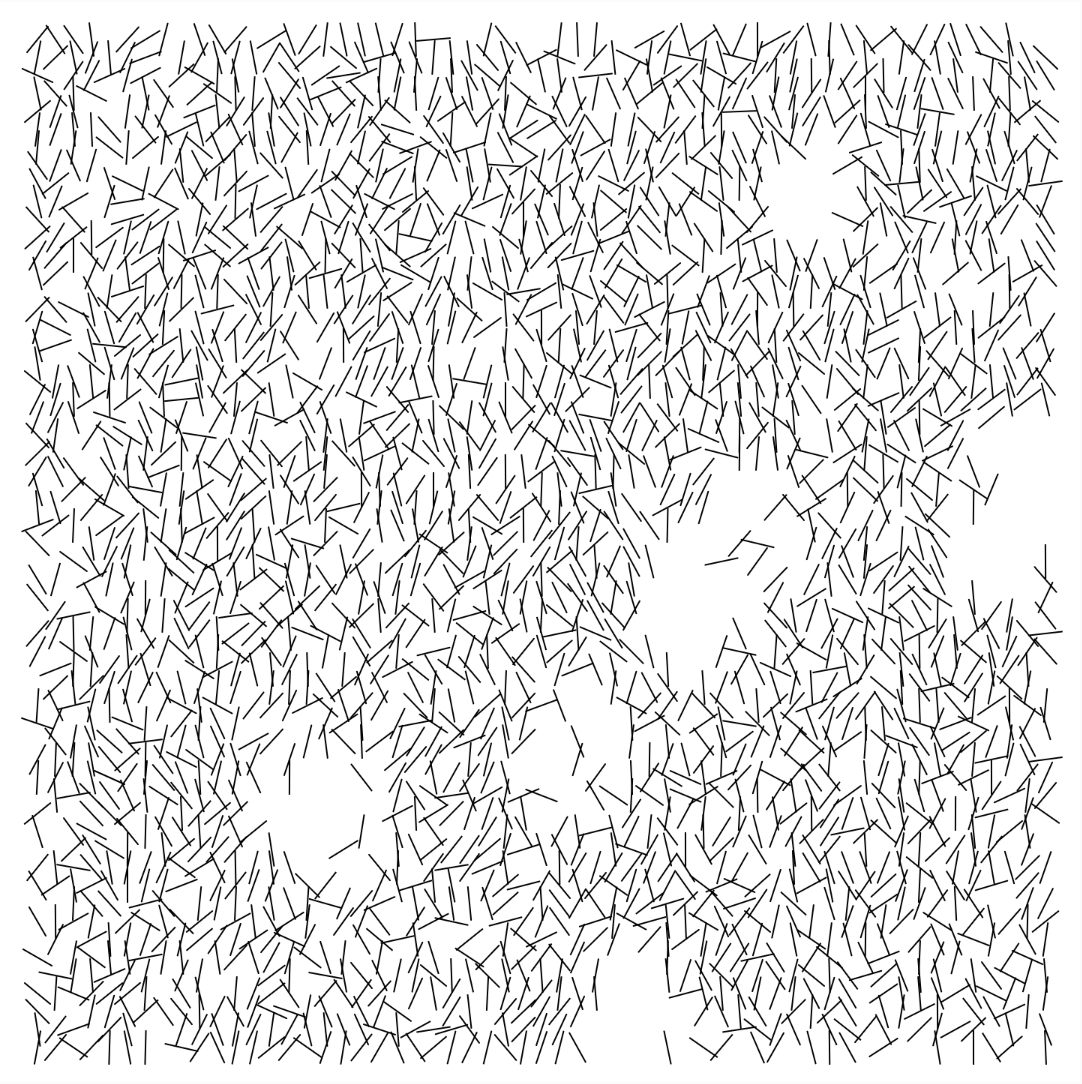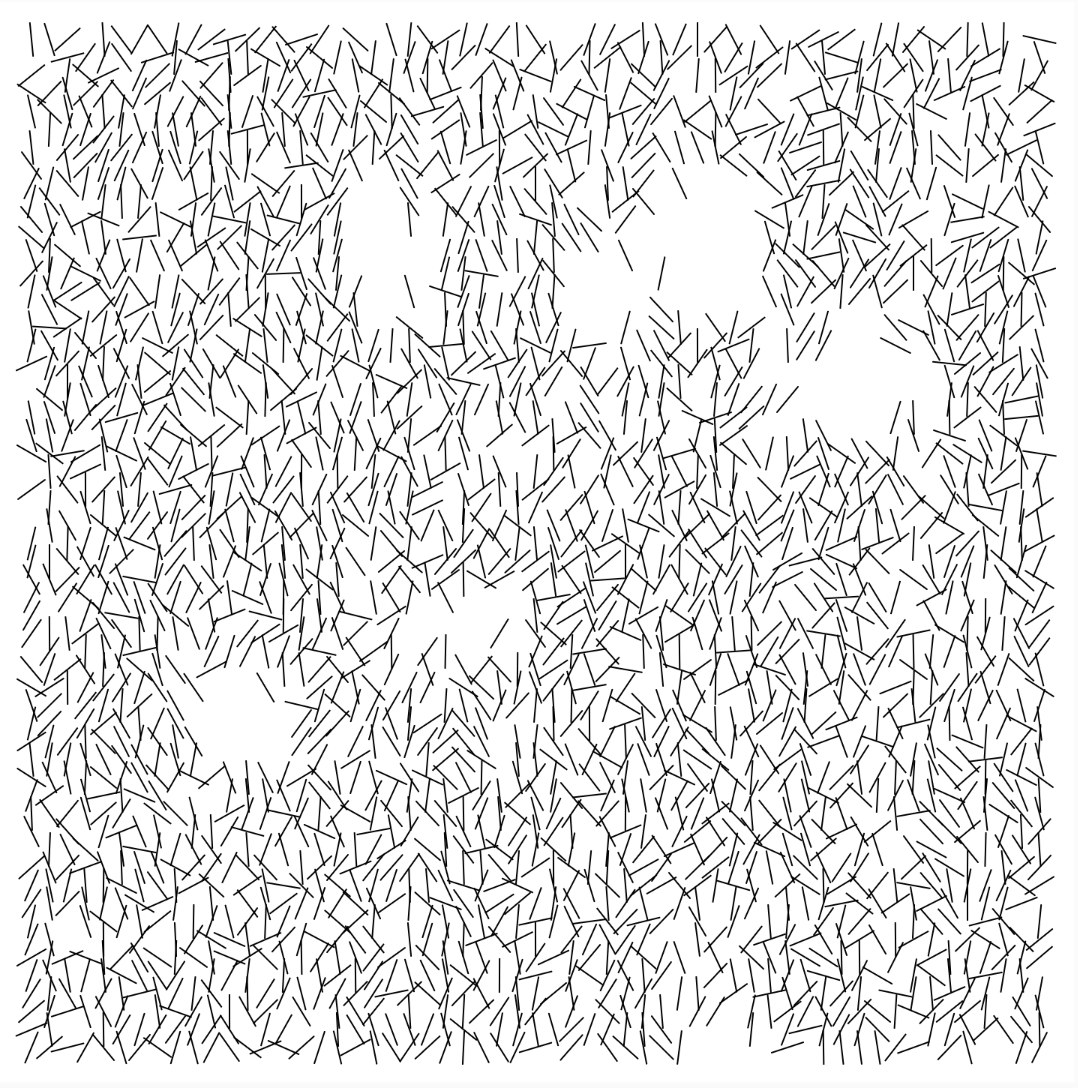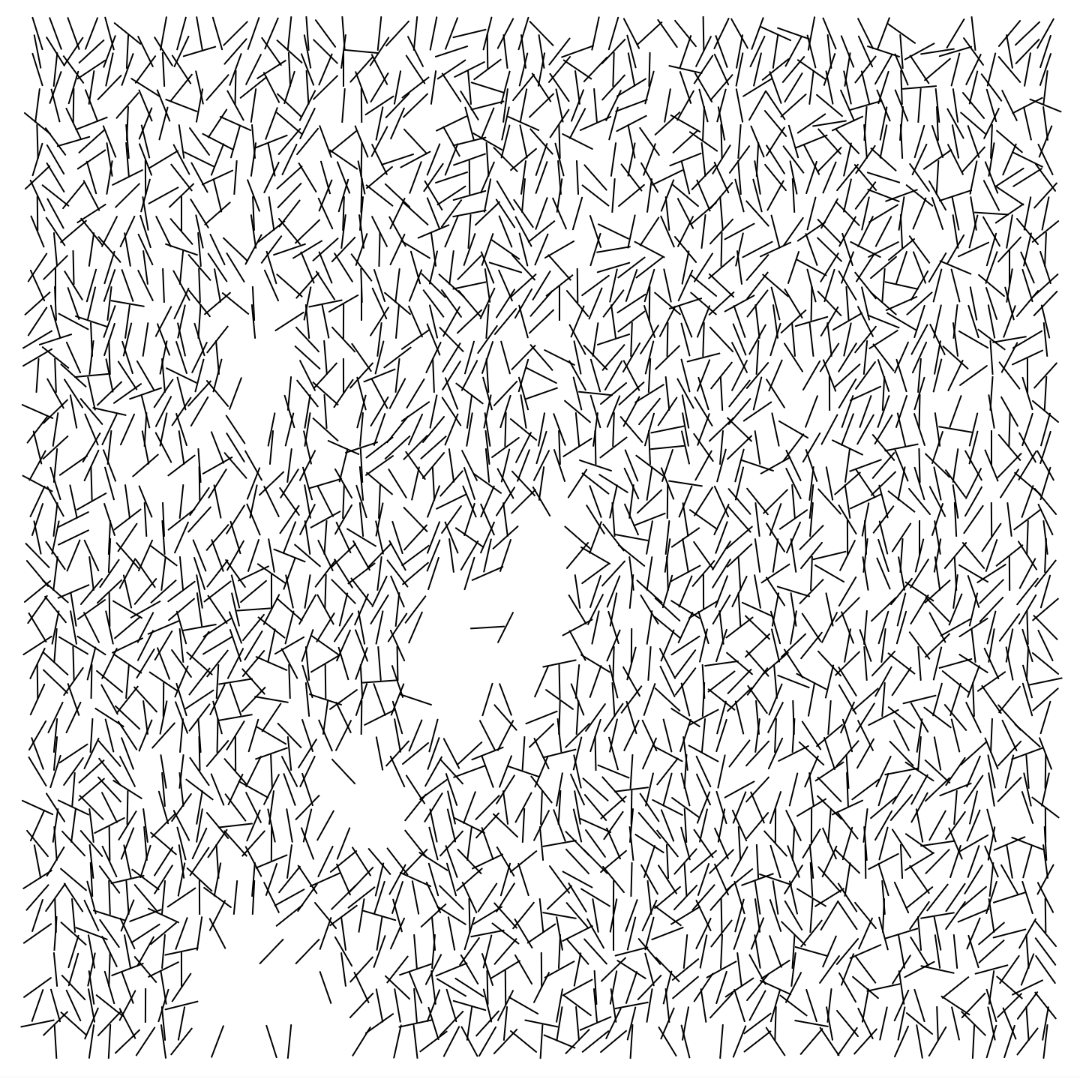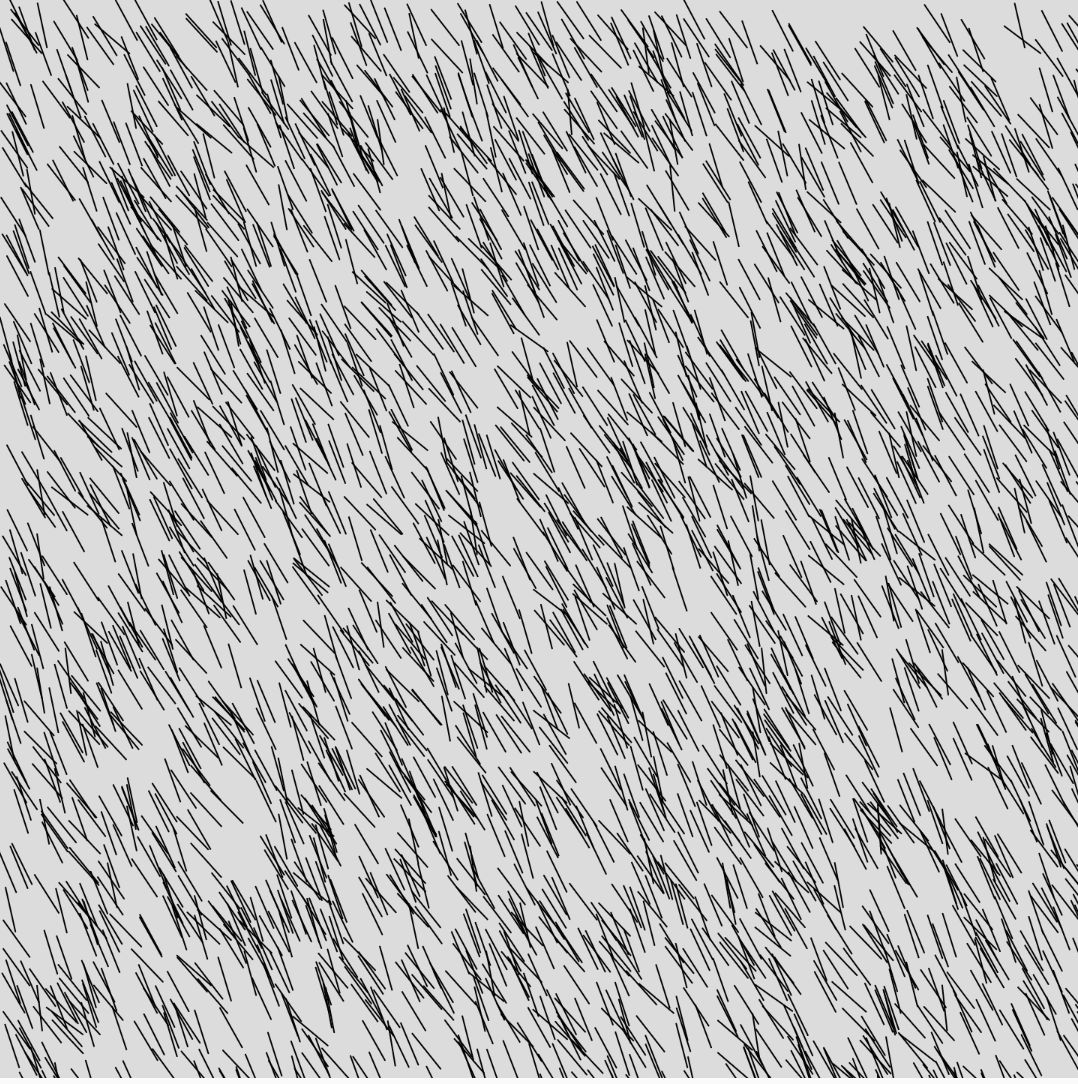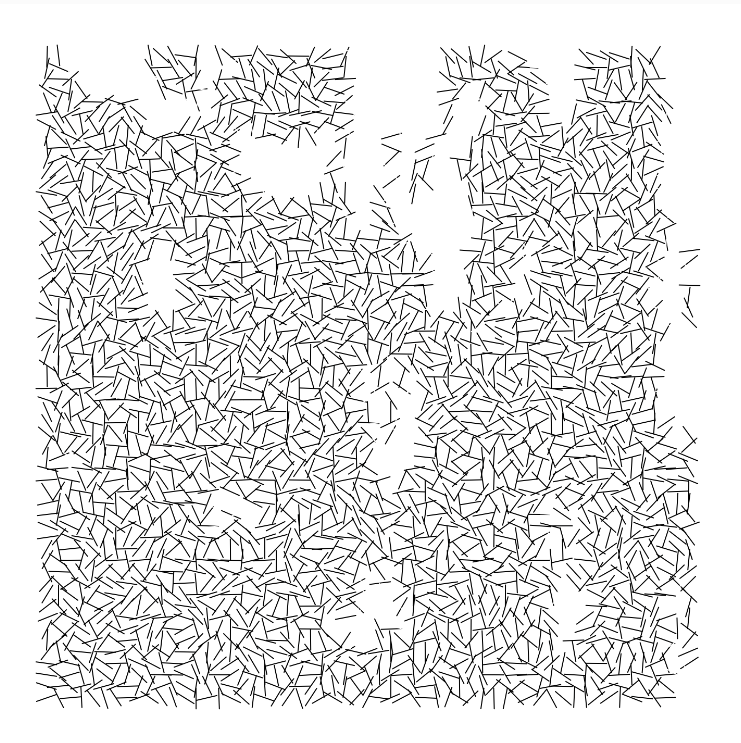A
Novels are effectively complex. The elements of a novel are ordered by various structures of language, but still various. Letters are arranged into words, but the particular words vary widely. Similarly, words are arranged into sentences and sentences into paragraphs, chapters. To someone who doesn't understand the language, a novel seems almost like total randomness, but the rules of spelling, grammar, and narrative introduce an element of order.
B
The Problem of Uniqueness: I often have a certain reaction to a lot of generative art. When generative art creates infinite variations on something, each individual thing seems to lose its impact. You end up going "cool" then moving on. I feel like the stuff that works for me is when the objects generated are not presented as the main event. The generating system is the unique object with the unique experience.
